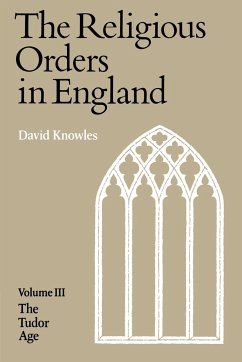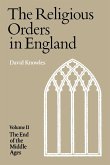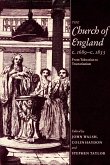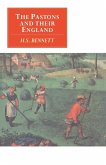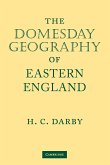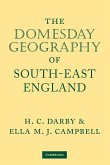This volume opens with a survey of monastic life and activities in the early Tudor period, which throws new light on the fortunes of the Cistercian abbeys and on the influence upon the monks of the new humanist education. Chapters are devoted to Bishop Redman's visitations of the white canons, to the rural pursuits of Prior More of Worcester, to the friars ranged for and against the New Learning, and to the Carthusians; there are also a number of character sketches of notable abbots and others. There follows a review of the changing religious climate: of Wolsey's attempts at reform, of the all-perspective influence of Erasmus and of the career of Elizabeth Barton. The economic state of the monasteries is discussed as a prelude to the sombre story of the Suppression, illuminated by rare gleams of heroism. The fate and after-careers of the religious are treated in full from the record sources; there are chapters on the aftermath in Mary's reign and the linking with modern Benedictines, and an epilogue looks back over six centuries of English monasticism.
Table of contents:
Preface; List of abbreviations; Part I. The Tudor Scene: 1. The reign of Henry VII; 2. Some monastic activities; 3. The Cistercians; 4. The Premonstratensians; 5. The friars in the early sixteenth century; 6. Sixteenth-century visitations; 7. Monastic personalities; 8. Humanism at Evesham; 9. William More, prior of Worcester, 1518-36; 10. Butley and Durham; Part II. The Gathering Storm: 11. Erasmus; 12. Reform and suppression under Wolsey; 13. European precedents; 14. Acceptance of the royal supremacy; 15. Elizabeth Barton; Part III. Suppression and Dissolution: 16. Before the dissolution; 17. The end of the Observants; 18. Syon; 19. The London Charterhouse and its sister houses; 20. The economy of the monasteries in 1535; 21. Servants, almsgiving and corrodians; 22. The visitation of 1535-6; 23. The Act of Suppression and the case for the defence; 24. The dissolution of the lesser houses; 25. The Northern Rising; 26. The last phase; 27. The attack on the greater houses; 28. The suppression of the friars; 29. The cankered hearts; 30. The transformation of the buildings; 31. The new cathedrals and colleges; 32. The disposal of the lands; 33. The treatment of the dispossessed; Part IV. Reaction and Survival: 34. The Marian restoration; 35. The old and the new; 36. Epilogue; Appendices; Bibliography; Index.
Table of contents:
Preface; List of abbreviations; Part I. The Tudor Scene: 1. The reign of Henry VII; 2. Some monastic activities; 3. The Cistercians; 4. The Premonstratensians; 5. The friars in the early sixteenth century; 6. Sixteenth-century visitations; 7. Monastic personalities; 8. Humanism at Evesham; 9. William More, prior of Worcester, 1518-36; 10. Butley and Durham; Part II. The Gathering Storm: 11. Erasmus; 12. Reform and suppression under Wolsey; 13. European precedents; 14. Acceptance of the royal supremacy; 15. Elizabeth Barton; Part III. Suppression and Dissolution: 16. Before the dissolution; 17. The end of the Observants; 18. Syon; 19. The London Charterhouse and its sister houses; 20. The economy of the monasteries in 1535; 21. Servants, almsgiving and corrodians; 22. The visitation of 1535-6; 23. The Act of Suppression and the case for the defence; 24. The dissolution of the lesser houses; 25. The Northern Rising; 26. The last phase; 27. The attack on the greater houses; 28. The suppression of the friars; 29. The cankered hearts; 30. The transformation of the buildings; 31. The new cathedrals and colleges; 32. The disposal of the lands; 33. The treatment of the dispossessed; Part IV. Reaction and Survival: 34. The Marian restoration; 35. The old and the new; 36. Epilogue; Appendices; Bibliography; Index.

